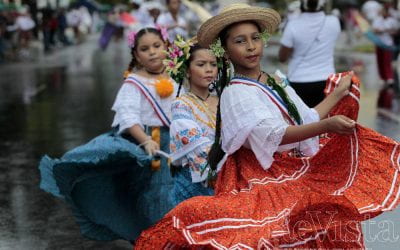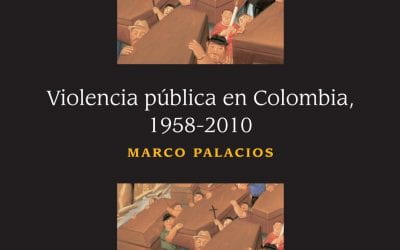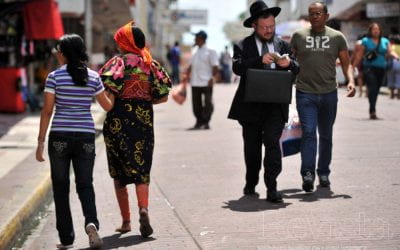First Take: The Isthmus and Its Challenges
For the past 20 years Panamá has maintained enviable economic growth. During the last decade, the country consistently ranked among the top in economic growth in all of Latin America. Despite the serious economic crisis that devastated Europe and the United States, this small country experienced a more than 10 percent growth rate in 2011 and 2012. The infrastructure in progress—including the first subway in Central America, hundreds of skyscrapers, new residential neighborhoods, ports, and other logistics zones—astonishes visitors who come to Panama City.
Following the 1989 U.S. military invasion of Panamá, the nation’s political forces came together to rebuild an open, democratic, and demilitarized country. Since then, Panamá has held four national elections with transparency. Furthermore, opposition candidates won all four elections. Their victories were promptly accepted by the electoral authorities, as well as by the other candidates.
It is no coincidence that economic growth coincided with the establishment in Panamá of a democratic regime that left behind two decades of military control and saw the transfer of the administration of the Panama Canal to Panamanian hands. In fact, after covering operational costs, Panamá received in just one year dividends equivalent to the sum of all dividends received during the ninety years of U.S. control of the waterway.
Under democracy, the administration of the Panama Canal became an independent and technical body, devoid of party politics. The canal has been under Panamanian management since December 31, 1999, and has been an example of efficiency and good administration. Ships that transit the waterway today do so faster and with fewer accidents than ever before in the history of the canal, even before the conclusion of an ambitious expansion project underway that should be ready next year.
While enjoying this bonanza, economic growth has not been transferred to its entire population in an equitable and efficient fashion. Pockets of urban and rural poverty remain at unacceptable levels. According to the Economic Commission for Central America and the Caribbean (Cepal), 12.4 percent of the population lives in extreme poverty (Panorama Social de America Latina, 2012). The percentage of Panamanians living in extreme poverty has decreased in the last 10 years from 18 percent to 12.4 percent, but this is entirely unacceptable, especially when an additional 15 percent of the population is at the “poverty” line, and that does not count participants in the informal economy who escape inclusion in the statistics.
Public education continues to be a calamity; twenty years of democratic government have not been able to improve teacher quality, much less the performance and test results of students. And the level of education reflects in the quality of the labor force needed to sustain economic growth. At present, unemployment figures are under 3 percent, but 46 percent of workers have not finished high school, according to Cepal.
Panamanians are also facing an enormous political challenge: the administration of justice. The judicial branch is being steadily taken over by the country’s political machinery. After the U.S. invasion, initial efforts to give independence to judges and prosecutors (during the military dictatorship, the judicial system was under the absolute control of the government) began to wane when political leaders sought to protect themselves from charges of corruption committed during their administrations. This failure is a veritable tragedy for Panamanians. It’s a ticking time bomb if corrective measures are not taken.
The judicial system has a vertical control structure. The president appoints the nine members of the Supreme Court of Justice, who are then ratified by the National Assembly for 10-year periods. The Supreme Court directly appoints all appellate court judges. These, in turn, appoint all circuit judges. And circuit judges appoint all minor judges. Between four and five justices are appointedduring every presidential term, and history has shown that the ratification of these appointments by the National Assembly is a mere formality. President Ernesto Perez Balladares, followed by President Mireya Moscoso, initiated the practice of appointing justices with loyalty to the current administration to the Supreme Court, but even worse, judges who were willing to cover the president’s back during their tenure. This practice has come to its lowest point with President Ricardo Martinelli, who has coopted the court in an unprecedented fashion, at a time when acts of corruption have stigmatized his administration from the first moment he took office. In opinion poll after opinion poll, the Panamanian judicial branch receives a less than 20 percent credibility rating.
Elections will take place next year, in May 2014. On the same day, voters will choose their president, vice president, all 71 members of the National Assembly (Panamá is one of the few countries in the world where the congress is unicameral), and all of the country’s mayors and municipal councils. The presidential term, as well as those of the deputies and mayors, is for five years.
Martinelli won in 2009 with a vast majority. His promise of “change” was based on a head-on fight against corruption that is becoming a chronic problem for the country. The majority of the electorate believed in Martinelli’s campaign promises. After all, he was a multimillionaire who promised to solve Panamá’s problems—as he had done in the private sector—as an outsider and with zero tolerance toward corruption. He sold Panamanians a Bloomberg-type of leadership; instead, he became a Berlusconi.
Unlike in the political arena, this year and next look promising in the economic field. Panamá will be ready to open up to the world an expanded canal and a modern city, with an environment in which thousands of U.S. and European retirees have chosen to live. Panamá’s great challenge at this point is not to sustain the growth of its economy but to strengthen its fragile institutional democracy, to substantially improve its education system, and to initiate a serious commitment toward an independent administration of justice before these institutions collapse and cause problems that could overshadow the good rating that financial credit-rating institutions have given us.
Spring 2013, Volume XII, Number 3
Fernando Berguido was a Nieman Fellow at Harvard University. He is a former publisher and editor of La Prensa, a past president of Transparency International-Panamá, and a member of the Truth Comission of his country. He received his law degree from the Universidad Santa Maria La Antigua School of Law and earned—as a Fulbright Scholar—a Master of Laws degree from the University of California, Los Angeles School of Law (UCLA).
Related Articles
Panamá and the United States
Marching bands in their colorful uniforms from schools all over Panamá fill the streets of the City for the November 3 Independence Day parades. Panamá is…
Violencia pública en Colombia
Another book about violence in Colombia? At first glance, it would seem superfluous to add one more title to the already extensive bibliography that…
Muslims and Jews in Panamá
The Muslim community in Panamá, understood as a group that maintains its cultural and religious traditions, became rooted in the second half of the 20th…





